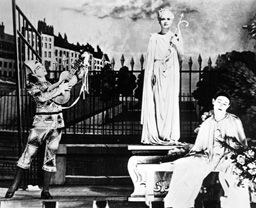I was reading the BBC news “Pictures of the Day” yesterday and came upon an intriguing photograph of a technician restoring the 1945 French film “Les Enfants du Paradis,” (“Children of Paradise“) at the laboratory of Eclair outside Paris. The film shot on nitrocellulose was seriously compromised and constantly in danger of exploding or bursting into flames – never a good thing! The film was directed by Marcel Carné during the German occupation of France during World War II. The plot is prototypic. Set in the Parisian theatre scene of the 1820s and 30s, it tells of a needless-to-say beautiful courtesan named Garance, and the four men who love her: a mime artist, an actor, a criminal, and an aristocrat.
The accolades for this film are astounding. In the original American trailer it was described as the French answer to “Gone With the Wind” . None other than the great French film director François Truffaut said: “‘I would give up all my films to have directed Children of Paradise’” TAnd here’s the clincher, in 1995, it was voted “Best Film Ever” in a poll of 600 French critics and film professionals.
So, the restoration is an important landmark in the history of film conservation. Now we get to see it as it was meant to be seen. It is also a tribute to the incredible painstaking work associated with such a frame by frame. It is truly a work of love, and to someone, like myself, who was involved in some of the early image processing, our ability to accomplish such Herculean tasks is, frankly, awe inspiring!
But it all begs the questions: what is this thing called nitrocellulose and why would anyone use an explosive as a film base? I’d like to explore these mysteries in tomorrow’s blog.

